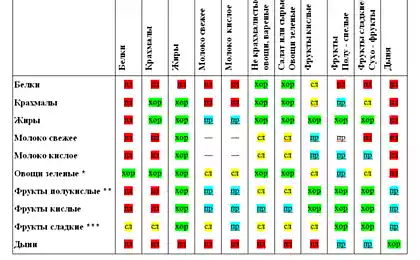542
Molybdenum: high-quality detoxification of the body
In humans molybdenum:

The daily requirement of the human body is 75-250 mcg, in patients older than 75 years – 200 mcg. Some authors consider that the daily requirement of molybdenum is approximately 0.3–0.4 mg.
Molybdenum from food products in the form of soluble complexes is readily absorbed. People have absorbed 25-80% of molybdenum from food. Absorption occurs in the stomach and throughout the small intestine, mainly in its proximal than in the distal. On the absorption of molybdenum significantly influenced by the interaction between the molybdenum and the various dietary forms of sulfur.
Then about 80% of molybdenum, entering the blood, binds to proteins (primarily albumin) and transported throughout the body.
In blood, molybdenum is distributed uniformly between formed elements and plasma.
A large part of the molybdenum quickly gets into the kidneys and excreted them.
Excretion is the primary mechanism of homeostatic regulation.
Significant amounts of this element are excreted in the bile.
The accumulation of molybdenum in mammals is not happening.
Organs containing high amounts of molybdenum, – the liver and kidneys.
The biological role in the human body
Physiological significance of molybdenum for human and animal organism was first demonstrated in 1953, with the discovery of the influence of this element on the activity of the enzyme xanthine oxidase, which is responsible for purine metabolism (xanthine oxidase promotes the conversion of purines into uric acid).
Molybdenum promotes more effective and efficient antioxidants, in particular vitamin C.
It is an important component of the system of tissue respiration. Enhances the synthesis of amino acids, improves the nitrogen accumulation.
Molybdenum is part of several enzymes (aldehyde, sulfite oxidase, xanthine oxidase, etc.), performing important physiological functions, in particular, regulating the metabolism of uric acid.
Molybdoenzymes catalyze the hydroxylation of various substrates:
Synergists and antagonists of molybdenum
I believe that tungsten, lead and sodium act as antagonists of molybdenum and cause its deficiency in the body.
Copper sulfate enhances the excretion of molybdenum in the bile.
Thiomolybdate ammonium is an antagonist of copper and violates its utilization in the body.
Deficiency of copper and iron increases the content of molybdenum in the body.
Signs of molybdenum deficiency:
In case of insufficiency in the organism of molybdenum (or tungsten excess) disrupted the ability of oxidation of xanthine to uric acid, inhibited the catabolism of methionine, reduced excretion of uric acid and inorganic sulfates, reduced growth rate, the formation of xanthine stones in the kidneys.
Deficiency of molybdenum may lead to reduced cleavage of cellulose and an excessive accumulation of copper in the body, up to copper intoxication.
All these phenomena can be eliminated by the addition of molybdenum to the diet.
Deficiency of molybdenum is possible for people receiving total parenteral nutrition or stress (increased need to sulfitoxidase).
In patients receiving prolonged total parenteral nutrition, described the syndrome of "acquired molybdenum deficiency":
Recognition of the role of molybdenum as a component of sulfite oxidase and evidence that sulfite oxidase deficiency disrupts the metabolism of cysteinewere confirmed cases of disorders caused by insufficient functioning of molybdenum in humans. So, there is a congenital defect in the metabolism of cysteine (sulfite oxidase deficiency) anomaly, which is characterized by severe brain damage, mental retardation, lens dislocation, increased urinary excretion of sulfite, and decreased urinary excretion of sulphate, which leads to coma and death. It was found that in patients with a congenital deficiency of the metabolism of cysteine, there is almost no molybdenum.
In some parts of the world observed the endemic diseases associated with the degree of security of the population molybdenum (for example, the marked increase in the incidence of esophageal cancer in Henan province, China; Transkei, South Africa).
The excessive consumption of molybdenum is in the range of 10-15 mg/day the clinical symptoms of intoxication. At doses of molybdenum in excess of 15 mg/day, increased activity of xanthine oxidase, uric acid accumulates, increasing the risk of gout (e.g., in individuals in contact with the molybdenum in a production environment).
In chronic molybdenum intoxication develop nonspecific symptoms that manifest irritation of mucous membranes, pneumoconiosis, reduction of body weight.
When excess molybdenum content in the soil is observed endemic disease "molybdenum" gout, first observed in the Hankavan region of Armenia Professor Vladimir Kowalski.
The main symptoms of excess molybdenum:
Molybdenum is required:

Food sources of molybdenum:
Poor molybdenum in some fruits, sugar, oils, fats and fish.published
Author: Konovalova Elena
P. S. And remember, only by changing their consumption — together we change the world! ©
Source: www.pharmacognosy.com.ua/index.php/makro-i-mikro-chudesa/molibden-kachestvennaya-detoksikatsiya
- acts as a cofactor in the composition of the enzymes responsible for the detoxification of the body,
- influence the use of iron reserves in the body,
- activates the metabolism of sulfur-containing amino acids is important for the nervous system and the brain,
- contributes to the retention of fluoride in strengthening tooth enamel and protecting them from destruction.

The daily requirement of the human body is 75-250 mcg, in patients older than 75 years – 200 mcg. Some authors consider that the daily requirement of molybdenum is approximately 0.3–0.4 mg.
Molybdenum from food products in the form of soluble complexes is readily absorbed. People have absorbed 25-80% of molybdenum from food. Absorption occurs in the stomach and throughout the small intestine, mainly in its proximal than in the distal. On the absorption of molybdenum significantly influenced by the interaction between the molybdenum and the various dietary forms of sulfur.
Then about 80% of molybdenum, entering the blood, binds to proteins (primarily albumin) and transported throughout the body.
In blood, molybdenum is distributed uniformly between formed elements and plasma.
A large part of the molybdenum quickly gets into the kidneys and excreted them.
Excretion is the primary mechanism of homeostatic regulation.
Significant amounts of this element are excreted in the bile.
The accumulation of molybdenum in mammals is not happening.
Organs containing high amounts of molybdenum, – the liver and kidneys.
The biological role in the human body
Physiological significance of molybdenum for human and animal organism was first demonstrated in 1953, with the discovery of the influence of this element on the activity of the enzyme xanthine oxidase, which is responsible for purine metabolism (xanthine oxidase promotes the conversion of purines into uric acid).
Molybdenum promotes more effective and efficient antioxidants, in particular vitamin C.
It is an important component of the system of tissue respiration. Enhances the synthesis of amino acids, improves the nitrogen accumulation.
Molybdenum is part of several enzymes (aldehyde, sulfite oxidase, xanthine oxidase, etc.), performing important physiological functions, in particular, regulating the metabolism of uric acid.
Molybdoenzymes catalyze the hydroxylation of various substrates:
- aldehydesilane oxidize and detoxify various pyrimidines, purines, pteridines;
- the xanthine oxidase catalyzes the conversion of hypoxanthine to xanthine and xantinov – uric acid (if elevated activity of xanthine oxidase in the blood accumulates excessive amount of uric acid that leads to gout);
- sulfitoxidase catalyzes the transformation of sulfite to sulfate.
Synergists and antagonists of molybdenum
I believe that tungsten, lead and sodium act as antagonists of molybdenum and cause its deficiency in the body.
Copper sulfate enhances the excretion of molybdenum in the bile.
Thiomolybdate ammonium is an antagonist of copper and violates its utilization in the body.
Deficiency of copper and iron increases the content of molybdenum in the body.
Signs of molybdenum deficiency:
- anxiety,
- irritability,
- violation of visual ("dark") adaptation
- "blindness",
- violation of heart rhythm (tachycardia),
- increase the risk of esophageal cancer,
- the reduced activity of enzymes containing molybdenum.
In case of insufficiency in the organism of molybdenum (or tungsten excess) disrupted the ability of oxidation of xanthine to uric acid, inhibited the catabolism of methionine, reduced excretion of uric acid and inorganic sulfates, reduced growth rate, the formation of xanthine stones in the kidneys.
Deficiency of molybdenum may lead to reduced cleavage of cellulose and an excessive accumulation of copper in the body, up to copper intoxication.
All these phenomena can be eliminated by the addition of molybdenum to the diet.
Deficiency of molybdenum is possible for people receiving total parenteral nutrition or stress (increased need to sulfitoxidase).
In patients receiving prolonged total parenteral nutrition, described the syndrome of "acquired molybdenum deficiency":
- hypermethioninemia,
- hypouricemia,
- hyperoxaluria,
- reportsuri and hyposulfate,
- progressive mental disorders (coma).
Recognition of the role of molybdenum as a component of sulfite oxidase and evidence that sulfite oxidase deficiency disrupts the metabolism of cysteinewere confirmed cases of disorders caused by insufficient functioning of molybdenum in humans. So, there is a congenital defect in the metabolism of cysteine (sulfite oxidase deficiency) anomaly, which is characterized by severe brain damage, mental retardation, lens dislocation, increased urinary excretion of sulfite, and decreased urinary excretion of sulphate, which leads to coma and death. It was found that in patients with a congenital deficiency of the metabolism of cysteine, there is almost no molybdenum.
In some parts of the world observed the endemic diseases associated with the degree of security of the population molybdenum (for example, the marked increase in the incidence of esophageal cancer in Henan province, China; Transkei, South Africa).
The excessive consumption of molybdenum is in the range of 10-15 mg/day the clinical symptoms of intoxication. At doses of molybdenum in excess of 15 mg/day, increased activity of xanthine oxidase, uric acid accumulates, increasing the risk of gout (e.g., in individuals in contact with the molybdenum in a production environment).
In chronic molybdenum intoxication develop nonspecific symptoms that manifest irritation of mucous membranes, pneumoconiosis, reduction of body weight.
When excess molybdenum content in the soil is observed endemic disease "molybdenum" gout, first observed in the Hankavan region of Armenia Professor Vladimir Kowalski.
The main symptoms of excess molybdenum:
- increased activity of xanthine oxidase,
- increase the level of uric acid in the urine;
- gout (also possible uraturia, urolithiasis);
- irritation of mucous membranes,
- pneumoconiosis;
- inhibition of hematopoiesis (anemia, leukopenia),
- the decrease in body mass.
Molybdenum is required:
- when tumors of the brain,
- the blind
- tachycardia,
- male infertility.

Food sources of molybdenum:
- milk and dairy products;
- liver, kidneys;
- nuts and seeds: peanuts, cashews, sesame seeds, poppy seeds, macadamia, almonds, Brazilian nuts, pine nuts, sunflower seeds, pumpkin seeds, pistachios, hazelnuts;
- fruits: avocado, apricots, pineapples, cherries, strawberries, figs, cranberry, kiwi, dogwood, gooseberry, raspberry, tangerine, sea buckthorn, Aronia, plums, red currants, black currants, guava, persimmons, cherries;
- dried fruits: raisins, dried figs, dried apricots, prunes;
- vegetables: cabbage, kohlrabi, cauliflower, potatoes, carrots, hot pepper (chili), radish, black radish, turnips, beets, tomatoes, Jerusalem artichoke, horseradish, garlic;
- herbs: green onion, lettuce, green garlic, spinach;
- all legumes: beans, peas, soybeans, beans, lentils;
- cereals: buckwheat, corn, oats, millet, soft wheat, durum wheat, unpolished rice, rice wild, rye and other cereals, barley;
- cakes.
Poor molybdenum in some fruits, sugar, oils, fats and fish.published
Author: Konovalova Elena
P. S. And remember, only by changing their consumption — together we change the world! ©
Source: www.pharmacognosy.com.ua/index.php/makro-i-mikro-chudesa/molibden-kachestvennaya-detoksikatsiya
Betrayal at the energy level never happens suddenly or accidentally.
Alexander Yanov: therapy "primal"























